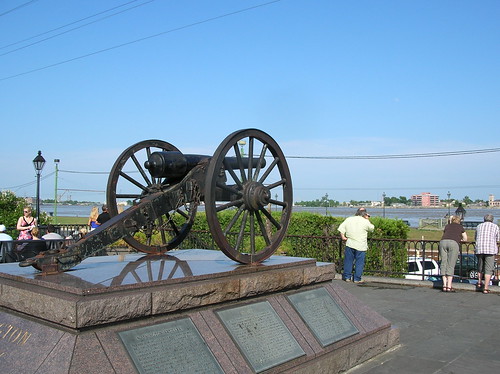Back in February, Campanella summed up the book for the Times-Picayune's Mike Scott.
His trips to New Orleans stand out not only as the longest journeys of his life, but also as his only first-hand exposure to the depths to which slavery pervaded Southern society. These trips, it's no exaggeration to say, were significant.
At the same time, though -- through his compelling narrative and accessible writing style -- Campanella presents a vivid snapshot of life on the river and in New Orleans at the time. "What the book does is it uses Lincoln as a history docent, to guide us through how that river economy worked via the flatboat trade, and how New Orleans figured into it," Campanella said.
"(The goal was) to kind of re-create city life as experienced at the pedestrian level, because that's what Lincoln was at that point. He was a curious, eyes-wide-open pedestrian, a visitor."
There are competing theories as to the actual dates of the flatboat trips. Campanella's analysis puts Lincoln's arrival in New Orleans around mid May, quite possibly on today's date, actually. It's an auspicious book to have picked up just as the city's collective attention has been more focused on the river than it has been in some time.
With so much talk lately of loose barges wreaking havoc on the river I went downtown a few days ago to watch with great interest as several barges came hurtling downriver at top speed. Boats running with the current have to haul ass in order to maintain control.
As the river approaches Esplanade Avenue, it makes a sharp bend to the east. According to John Barry, it's a particularly dangerous curve.
The turn is so sharp that the water surface on the outside of the bend rises a foot higher than on the inside, as if banking around a racetrack, and the currents generate such force that they make this bend the deepest spot on the river, 240 feet deep.

Esplanade Avenue Wharf (the outer rim of Barry's "racetrack") seen from the street side. In 1927, a large sand boil erupted right around here somewhere.
With this in mind, it's startling to watch the tugboats fly barges directly at the Esplanade wharf only to dig into this hairpin turn and still manage not to go all Bright Field on us at the worst possible moment.
Campanella describes several safety hazards associated with the flatboats docked along the New Orleans riverfront. During the high season, the boats crowded the banks became a kind of floating marketplace. But the longer the boatmen lingered in the dock living and sleeping on board, they could become a sanitary nuisance as well as a fire hazard. Also most flatboats were dismantled by their owners at the end of their usage and the wood sold off although it seems that not every boatman was as expeditious in removing their craft as the city would have liked. Campanella cites several actions by the City Council to tighten the regulations in this manner including this ordinance from 1831.
That part about threatening to "set adrift" flatboats not dismantled 48 hours after unloading put me in mind of the threats against offending vessels recently echoed by the councilpersons of today.
Runaway ships are a big concern for the city's water treatment plant. Officials with the Sewerage & Water Board have asked the Coast Guard to keep an eye on the area to make sure barges don't run into the plant's pipes.
“We can't afford to have barges running loose breaking levees. That's unacceptable now,” said City Council President Jackie Clarkson. “We had to tolerate barges going astray in Katrina, in Gustav, in Rita, and we won't tolerate it anymore. We made laws, we're going to sink them, and we should.”
I'm still not clear on how Jackie intends to sink a runaway barge as it slips on a high current toward the levee. At first I thought maybe the cannon at Washington Artillery Park would be the way to go but you'd have to be one hell of a shot with that thing.

No comments:
Post a Comment